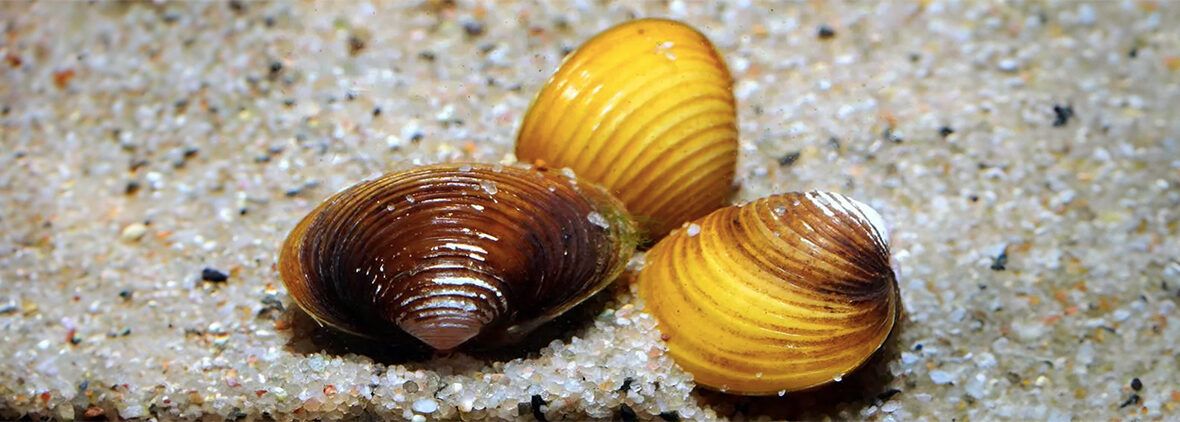
The freshwater Asian clam, aka freshwater bivalve, Asian freshwater clam, basket clam, or pygmy clam, is a type of freshwater bivalve native to eastern and southern Asia, including China, Japan, Korea, Russia, Thailand, the Philippines, and Indonesia. They may also be native to Africa and Australia. They have also been introduced to the United States. Due to their invasive nature and wide distribution, plus no real threats, these clams are listed as Least Concern by the IUCN. Their populations are also increasing.
First the Stats…
Scientific name: Corbicula fluminea
Weight: Up to .36 ounce
Length: Up to 2.36 inches
Lifespan: Up to 4 years
Now on to the Facts!
1.) They are a type of freshwater mollusk, along with freshwater snails.
2.) 1 of the largest species of freshwater bivalves is the swan mussel. These grow to a size of up to 7.87 inches.
3.) These bivalves can be found in small ditches, canals, ponds, lakes, slower moving rivers, and swamps.
4.) Bivalves actually have 3 major valve layers: The outermost layer is the thin epidermis (aka periostracum). The 2nd is the prismatic layer, containing calcium carbonate. The 3rd and innermost layer subsequently the thickest and is commonly referred to as the mother of pearl, a widely collected material for the production of ornamental buttons.
5.) Freshwater clams, in various species, can be found on every continent, sans Antarctica.
But wait, there’s more on the freshwater Asian clam!
6.) Being hermaphrodites, these clams possess both male and female reproductive capabilities. They can thus reproduce via self-fertilization, spawning, or even androgenesis (a type of male quasi-sexual reproduction where all genes are inherited from the male).
7.) Once the larvae are released into the water column they become semi-parasitic and will attach to the gills of freshwater fish. They attach to a host where they grow into juvenile adults at the same time doing little or no damage to the fish host.
Did you know…?
The study of freshwater bivalves predates Aristotle and has been in a constant state of flux and dispute, regarding their classification and identification.
8.) Crayfish, crabs, and some fish prey on these bivalves.
9.) Freshwater bivalves are filter feeders that provide an ecological service by improving water quality in the bodies of water in which they reside. Water quality is thus improved by filtering out fine particulates of organic matter, silt, and heavy metals as well as bacteria and phytoplankton in the water column which helps to reduce turbidity (being cloudy, opaque, or thick with suspended matter).
10.) Freshwater clams are also an important key element in the process of nutrient cycling due to their deposition of organic matter into the sediment through biodeposition, which is created from the fine particles they filter in.
11.) Where these clams become invasive is when they are left unchecked. They are able to clog up aquatic machinery and outcompete other native filter-feeding fauna, and they can reproduce rapidly.
Now a Short Freshwater Asian Clam Video!
Be sure to share & comment below! Also, check out the Critter Science YouTube channel. Videos added regularly!
Want to suggest a critter for me to write about? Let me know here.
Some source material acquired from: Wikipedia and IUCN
Photo credit: AquaSnails



